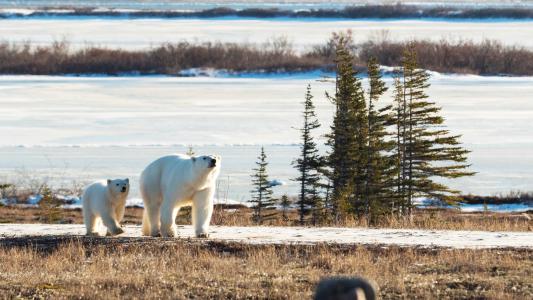In 2016, a miner ventured into the Canadian tundra in search of gold. What he found was the most complete wolf mummy researchers have ever seen.
The local Tr’ondëk Hwëch’in people named the preserved wolf pup “Zhùr” and agreed to have her placed on display at a research center in the Yukon.
Before that, though, they gave researchers the opportunity to study the wolf mummy — and her remarkable condition provided an unprecedented glimpse into the life of an ancient wolf.
The Ancient Wolf Mummy
Paleontologists Julie Meachen and Grant Zazula led the study, and one of their team’s primary objectives was figuring out how long ago Zhùr died.
That required a combination of three different techniques — radiocarbon dating, genome analysis, and oxygen-isotope analysis — but in the end, they estimate that the wolf mummy is about 57,000 years old.
They also wanted to figure out what lucky circumstances led to Zhùr’s preservation.
“It’s rare to find these mummies in the Yukon,” Meachen explained in a press release. “The animal has to die in a permafrost location, where the ground is frozen all the time, and they have to get buried very quickly, like any other fossilization process.”
“If it lays out on the frozen tundra too long it’ll decompose or get eaten,” she continued.
They didn’t discover any signs that their wolf mummy had starved to death, and her body was in pristine condition, meaning an attack by another animal wasn’t likely the cause.
Their best guess is that the ancient wolf was in her den when it collapsed. Not so lucky for Zhùr, but her death was likely instantaneous.
Dinner Time and Missing Denmates
They didn’t focus solely on Zhùr’s death — they wanted to learn everything they could about her life, too.
Based on x-rays of her bones and teeth, they estimate that she was only six to seven weeks old. That’s about the age a wolf mother starts bringing her pups solid food to eat, and a chemical analysis of Zhùr’s bones suggests her diet included a lot of fish, which was unexpected.
“Normally when you think of wolves in the Ice Age, you think of them eating bison or musk oxen or other large animals on land,” Meachen said. “One thing that surprised us was that she was eating aquatic resources, particularly salmon.”
It’s rare to find these mummies in the Yukon.
Julie Meachen
Modern wolves have been known to eat fish, though, so the discovery of the wolf mummy suggests that the practice may have started earlier than researchers thought.
There is one mystery about Zhùr’s life that the researchers weren’t able to solve: wolves are usually born in litters of four to six pups, so why was Zhùr by all herself when the den collapsed?
“It could be that she was an only pup or the other wolves weren’t in the den during the collapse,” Meachen said. “Unfortunately, we’ll never know.”
We’d love to hear from you! If you have a comment about this article or if you have a tip for a future Freethink story, please email us at tips@freethink.com.
